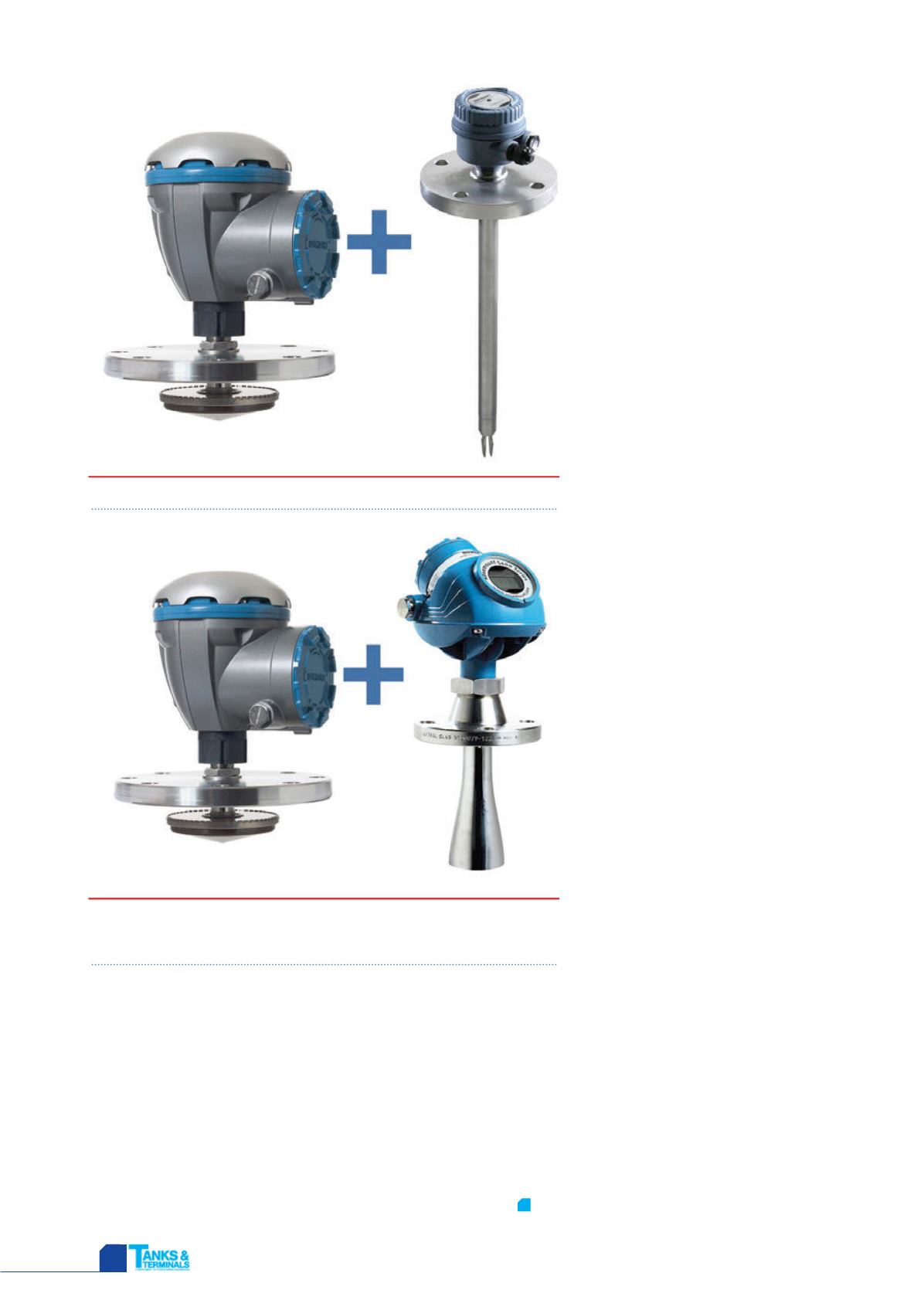
HYDROCARBON
ENGINEERING
60
this standard is increased operational efficiency and
higher tank utilisation. And it does not compete with
other more generic safety standards, but instead acts as a
complement. Using SIS designed in accordance with
IEC61511 is for example one way of fulfilling some of the
requirements in API 2350.
Using dual continuous gauges
One interesting approach to overfill protection offering a
potential for considerable safety and operational
improvement is the ‘dual continuous level measurement’,
i.e. to use more than one continuous measurement device
instead of discrete switches. By using
two separate radar level gauges it is
possible to compare the results and
immediately spot if one gauge is not
working. Adding on a temperature
compensated leak alarm allows for
early detection of small and gradual
spills, which may occur due to
corrosion.
This has a number of advantages:
n
Possibility to test the equipment
continuously at all levels.
n
You get redundant measurement.
n
Increased reliability and availability.
As safety concerns have become
more important on the industry’s
agenda, more and more tanks are
equipped with dual and even more
level devices. In some applications like
LNG (although not covered by
API 2350) the usage of two or more
gauges has been a common practice
for a long time.
To make device installation easier
and less costly, an innovative solution
is to use two radar gauges in one
housing. This ‘2 in 1’ feature provides
redundancy by using two independent
gauges. This method is particularly
attractive where installation of two
separate gauges is difficult, for
example on LPG tanks or floating roof
tanks.
Configuration
examples
Depending on installation and
operational conditions there are
several ways to configure redundant
overfill prevention as required for
Category 3 tanks as described by API
2350. Figures 3 – 5 show examples of a
modern radar tank gauging system.
The basis for the illustrated
configurations is a high precision radar
level gauge for overfill and dry run
prevention (in addition to measuring
level) which is combined with other radar devices,
switches and tank hubs.
Conclusion
Many tank overfill incidents in the past were the result
from faulty instrumentation. Today, the high tech, self
diagnostic equipment available has outstanding reliability.
It is worth considering a migration process where the
highest risk tank facilities are systematically upgraded to
the best overfill prevention equipment. The API 2350
standard is a good starting point providing the required
tools.
T&T
Figure 6.
High accuracy radar level gauge combined with medium
accuracy radar level transmitter to reduce cost. Independent level
measurement and continuous high level alarm.
Figure 5.
Radar level gauge and point level switch.


